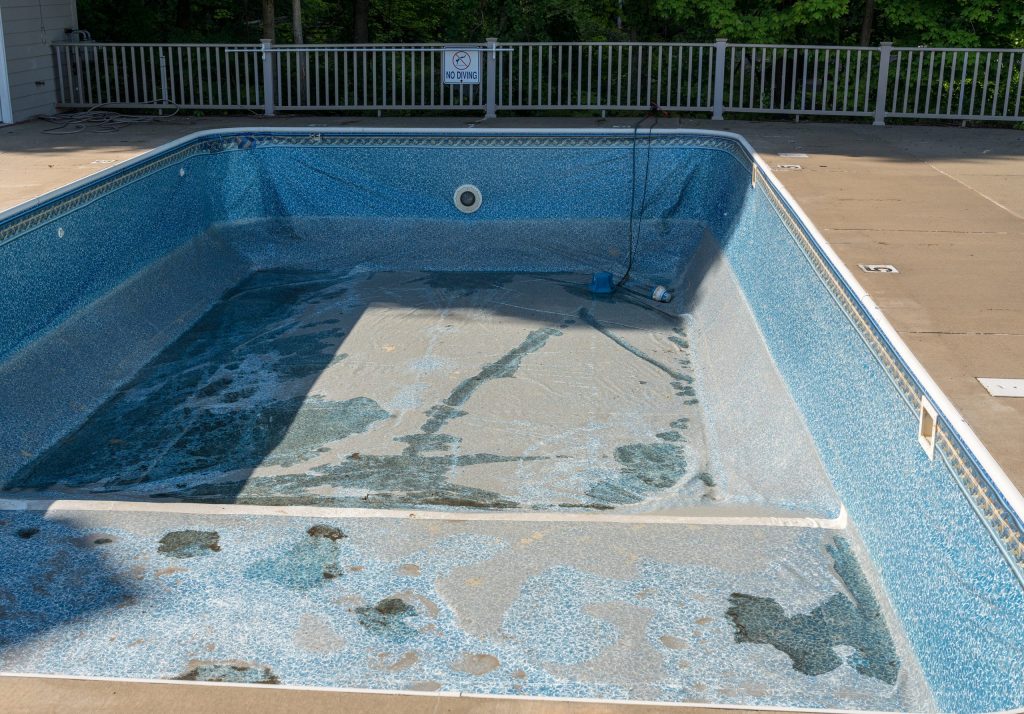What Causes Algae in Pools?
No pool owner wants to head outside for a cool, relaxing dip only to be met with a pool full of algae. Not only is algae visually off-putting, but it also presents a potential health hazard that can cause skin rashes, gastrointestinal discomfort, respiratory problems, and other issues after exposure.

If your pool is the unfortunate victim of an algae takeover and you’re confused about how it happened, the team at Select Pool Services is here to help. Below, we explain what pool algae is, the most common culprits behind it, and how you can prevent future regrowth.
What Exactly Is Pool Algae?
Before we break down the most common culprits behind algae proliferation, it’s helpful to understand what algae is. As photosynthetic organisms, algae is often mistaken to be an aquatic plant.
However, algae, much like fungi, grows from spores that exist just about everywhere outdoors. Not all species of algae are harmful to humans, but those that are (cyanobacteria, also known as blue-green algae) can cause serious health complications if ingested. They can also cause minor to severe skin irritation after exposure, which is why controlling algae growth in your pool is so important.
So what brings algae spores into your pool in the first place, and what causes those spores to grow like crazy? We have the answers below.
Wind and Inclement Weather Bring Spores Into Your Pool
Algae spores are everywhere; they’re a natural part of our ecosystem. And because they’re all over the place, even the slightest breeze can blow them into your pool. Rainwater also contains algae spores, so each time it drizzles or downpours, thousands of algae spores can make their way into your pool water.
But what if you have a pool enclosure? Will that stop algae from entering your pool? Unfortunately, no. The spores are so tiny and so prolific, there’s really no way to stop them from entering your pool water. However, a pool enclosure does help prevent other contaminants from entering your pool and accelerating algae growth.
It’s important to note that algae spores can only proliferate and bloom into visible colonies when water conditions are conducive to their growth. We’ll explain what creates ideal conditions for algae growth below.
Water Chemistry Problems Encourage Algae Growth
If the pH balance of your pool water is off, algae is more likely to proliferate. Ideally, your pool water should always fall within a pH range of 7.4-7.6 to allow for proper water sanitization. Because different species of algae grow best at different pH ranges, pool water that is either too acidic or too alkaline encourages algae growth. The following water issues generally cause chemical imbalances that result in imbalanced pH, poor sanitization, and algae blooms:
- Low chlorine levels
- Low calcium levels
- High pH readings
- Failing to enhance chlorine levels after rains or high bather loads (lots of swimmers in the pool)
- Failing to dilute pool water on a regular basis
- High phosphate levels in make up water used to refill pool
- Failing to brush and thoroughly clean the pool on a weekly basis
Water Contaminants Can Accelerate Algae Proliferation
A number of things can contaminate your pool, and if you’re not diligent about proper cleaning and sanitization, water contaminants can encourage rapid algae growth. If your pool sees frequent use, skin bacteria and bodily wastes from swimmers can quickly throw off your water chemistry balance, creating favorable conditions for algae.
Critters, leaves, mulch, fertilizers, runoff, sap, pollen, and airborne pollutants can easily enter your pool and again, throw off the pH of the water. Other common culprits behind pool contamination include:
- Dead spores or visible algae from previous algae blooms
- High levels of nitrates or nitrites
- Excessive amounts of dissolved carbon dioxide
- High ammonia levels
- Moderate to high phosphate levels (250 parts per billion and higher)
Though it’s virtually impossible to prevent contaminants from entering your pool, you can control whether they cause problems with the water. Adhering to a weekly cleaning and maintenance schedule will help ensure the water remains properly balanced and sanitized, which will keep algae growth at bay.
Pool Equipment Problems Create Favorable Conditions for Algae Growth
Issues with your pool equipment can quickly create ideal water conditions for algae growth. Poor water circulation and filtration can result in stagnant, bacteria-laden water that — much like a stagnant, warm pond — is highly conducive to algae proliferation. Whether you’re dealing with a sudden, unexpected algae bloom or you’re fighting persistent growth, the following pool equipment issues may be at fault:
- A filter that is too small for the pump or size of the pool
- A pump that overheats or continually cycles on and off
- A clogged or broken pump impeller
- Air leaks or water leaks, which cause the pump to draw air and/or de-prime
- A dirty or poorly functioning salt chlorinator
- A poorly functioning or damaged pool filter
- A clogged or air-locked tablet chlorinator
- A faulty backwash valve
Need to Get Rid of Algae in Your Dallas Area Pool? Contact Select Pool Service
If you’re unsure about what’s causing the algae in your pool, let our expert pool technicians at Select Pool Services help you out. For over a decade, we’ve specialized in pool equipment maintenance, repairs, and renovations for homeowners throughout the Greater Dallas area, so when you need knowledgeable service you can rely on, make us your first call! To learn more about our services or schedule an appointment, give us a call today at 214.755.7665, or send us a message. We’ll be in touch!
